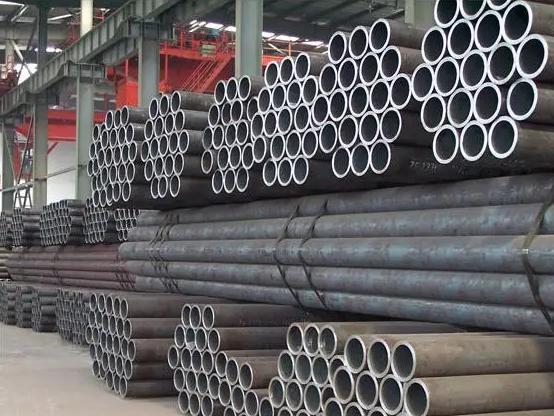
Carbon Seamless Steel Pipe Surface Roughness Standard
What is carbon seamless steel pipe?
Carbon seamless steel pipe surface roughness standards:
The surface roughness of carbon seamless steel pipe refers to the degree of tiny unevenness on the surface of the pipe. Its size is closely related to the corrosion resistance, lubricity, appearance, adhesion, etc. of the steel pipe. The surface roughness of carbon seamless steel pipes used in general industry is generally between 1.6-3.2μm. The roughness size needs to be determined based on actual use requirements and national standards. In some fields that require relatively high surface hardness, such as aerospace, automobiles, machinery manufacturing, etc., carbon seamless steel pipes have relatively high surface roughness requirements.

The following are some carbon seamless steel pipe surface roughness standards:
1. Surface roughness of round precision steel pipe: Ra≤1.6μm.
2. Surface roughness of cold drawn steel pipe: Ra≤6.3μm.
3. Surface roughness of hot-rolled steel pipe: Ra≤12.5μm.
Standards for carbon seamless steel pipes:
The production standards of carbon seamless steel pipes mainly include a series of standards such as ASTM (American Society for Testing and Materials), DIN (German Industrial Standards), and JIS (Japanese Industrial Standards). In different standards, the requirements for the surface roughness of carbon seamless steel pipes are also different. Therefore, carbon seamless steel pipes must be produced in accordance with corresponding standards.
Factors affecting the surface roughness of carbon seamless steel pipes:
1. Production process: The production process of carbon seamless steel pipe has a great impact on the surface roughness. Carbon seamless steel pipes are usually made by cold drawing, hot rolling, cold rolling and other methods. Different production processes will produce different surface roughness.
2. Steel pipe material: The surface roughness of different grades of steel will also vary. With the same production process, the surface roughness of carbon seamless steel pipes made of different materials will also be different.
3. Steel pipe surface treatment: The treatment method of the steel pipe surface will also have a certain impact on its roughness. Common surface treatment methods include polishing, sandblasting, electroplating, etc.
Things to note when using carbon seamless steel pipes:
When using carbon seamless steel pipes, you need to pay attention to the following matters: first, choose carbon seamless steel pipes that comply with national standards; secondly, for occasions that require high surface roughness, choose steel pipes with small surface roughness; finally, you must Avoid mechanical damage and chemical corrosion.
Conclusion:
The surface roughness of carbon seamless steel pipe is a very important indicator, which has an important impact on the quality and use effect of the steel pipe. Carbon steel pipe manufacturers need to strictly control the surface roughness when producing seamless steel pipes to ensure that the quality of the products meets standard requirements. When purchasing, buyers need to determine the specific roughness in advance based on different standards and requirements to ensure the use effect and life of the steel pipe.


